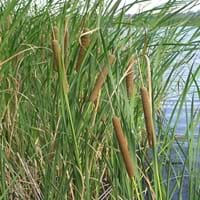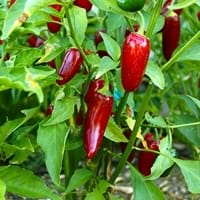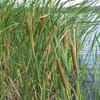Life Span
Perennial
Annual and Perennial
Origin
North America, United States, Northeastern United States, Mid-Atlantic United States, Southeastern United States, North-Central United States, Central United States, Western United States, California, Canada
Mexico, Central America, South America
Types
Not Available
Not Available
Habitat
Bog Garden, Ponds
Loamy soils, Well Drained
USDA Hardiness Zone
3-10
5-12
Sunset Zone
21,22
A1, A2, A3, H1, H2, 1a, 1b, 2a, 2b, 3a, 3b, 4, 5, 6, 7, 8, 9, 10, 11, 12, 13, 14, 15, 16, 17, 18, 19, 20, 21, 22, 23, 24
Habit
Thicket/Colonizing
Upright/Erect
Flower Color
Light Yellow, Light Green
White, Ivory
Flower Color Modifier
Not Available
Bicolor
Fruit Color
Brown
Red, Green, Dark Green
Leaf Color in Spring
Green
Dark Green
Leaf Color in Summer
Green
Dark Green
Leaf Color in Fall
Green
Dark Green, Black
Leaf Color in Winter
Not Available
Green
Leaf Shape
Flat, Narrow
Elliptic
Plant Season
Summer, Fall
Spring, Summer, Fall
Sunlight
Full Sun, Partial Sun
Full Sun
Type of Soil
Loam, Sand
Loam
The pH of Soil
Acidic, Neutral, Alkaline
Acidic, Neutral
Soil Drainage
Poorly Drained
Well drained
Bloom Time
Early Summer, Summer
Spring, Summer, Fall, Indeterminate
Tolerances
Wet Site
Drought
Where to Plant?
Ground
Ground
How to Plant?
Divison, Seedlings
Seedlings
Plant Maintenance
Medium
Medium
Watering Requirements
Needs Very high moisture
Average Water Needs
In Summer
Lots of watering
Lots of watering
In Spring
Moderate
Moderate
In Winter
Average Water
Average Water
Soil pH
Acidic, Neutral, Alkaline
Acidic, Neutral
Soil Type
Loam, Sand
Loam
Soil Drainage Capacity
Poorly Drained
Well drained
Sun Exposure
Full Sun, Partial Sun
Full Sun
Pruning
Remove damaged leaves
Remove damaged leaves, Remove dead branches, Remove dead leaves
Fertilizers
Nutrient Rich Fertilizer
All-Purpose Liquid Fertilizer
Pests and Diseases
Free of serious pests and diseases
Red blotch
Plant Tolerance
Drought
Drought
Flowers
Showy
Insignificant
Flower Petal Number
Not Available
Single
Foliage Texture
Coarse
Medium
Foliage Sheen
Glossy
Glossy
Attracts
Wildlife
Not Available
Allergy
Mild Allergen
Not Available
Aesthetic Uses
Cut Flowers, Wild gardens
Showy Purposes
Beauty Benefits
Not Available
Not Available
Environmental Uses
Air purification
Air purification
Medicinal Uses
anticoagulant, Diuretic, Haemostatic, Miscellany
Not Available
Part of Plant Used
Flowers, Leaves, Root, Seeds, Stem
Fruits
Other Uses
Used as a thickener in soups, Used to make biscuits, Used to produce edible oil, Used to yield a sweet syrup
Used As Food
Used As Indoor Plant
No
No
Used As Outdoor Plant
Yes
Yes
Garden Design
Dried Flower/Everlasting, Wildflower
Container, Edible, Herb / Vegetable, Tropical
Botanical Name
TYPHA angustifolia
CAPSICUM annuum 'Tam Mild Jalapeno II'
Common Name
Narrowleaf Cattail, Lesser Reedmace
Jalapeño Pepper, Mild Jalapeño Pepper
In Hindi
Narrowleaf Cattail
जैलेपिनो मिर्च
In German
Schmalblättriger Cattail
Jalapeno-Chilischote
In French
Narrowleaf Cattail
Piment jalapeno
In Spanish
Espadaña de hoja estrecha
Chile jalapeño
In Greek
στενόφυλλα Cattail
jalapeño πιπέρι
In Portuguese
Narrowleaf Tifa
Pimenta jalapeno
In Polish
Wąskolistne Cattail
Papryka jalapeno
In Latin
Cattail glaucescens
jalapeno piperis
Phylum
Magnoliophyta
Tracheophyta
Class
Liliopsida
Magnoliopsida
Family
Typhaceae
Solanaceae
Clade
Angiosperms, Commelinids, Monocots
Not Available
Tribe
Not Available
Capsiceae
Subfamily
Not Available
Solanoideae
Number of Species
Not Available
Not Available
Season and Care of Narrowleaf Cattail and Jalapeño Pepper
Season and care of Narrowleaf Cattail and Jalapeño Pepper is important to know. While considering everything about Narrowleaf Cattail and Jalapeño Pepper Care, growing season is an essential factor. Narrowleaf Cattail season is Summer and Fall and Jalapeño Pepper season is Summer and Fall. The type of soil for Narrowleaf Cattail is Loam, Sand and for Jalapeño Pepper is Loam while the PH of soil for Narrowleaf Cattail is Acidic, Neutral, Alkaline and for Jalapeño Pepper is Acidic, Neutral.
Narrowleaf Cattail and Jalapeño Pepper Physical Information
Narrowleaf Cattail and Jalapeño Pepper physical information is very important for comparison. Narrowleaf Cattail height is 120.00 cm and width 240.00 cm whereas Jalapeño Pepper height is 40.60 cm and width 40.60 cm. The color specification of Narrowleaf Cattail and Jalapeño Pepper are as follows:
Narrowleaf Cattail flower color: Light Yellow and Light Green
Narrowleaf Cattail leaf color: Green
Jalapeño Pepper flower color: White and Ivory
- Jalapeño Pepper leaf color: Dark Green
Care of Narrowleaf Cattail and Jalapeño Pepper
Care of Narrowleaf Cattail and Jalapeño Pepper include pruning, fertilizers, watering etc. Narrowleaf Cattail pruning is done Remove damaged leaves and Jalapeño Pepper pruning is done Remove damaged leaves, Remove dead branches and Remove dead leaves. In summer Narrowleaf Cattail needs Lots of watering and in winter, it needs Average Water. Whereas, in summer Jalapeño Pepper needs Lots of watering and in winter, it needs Average Water.





